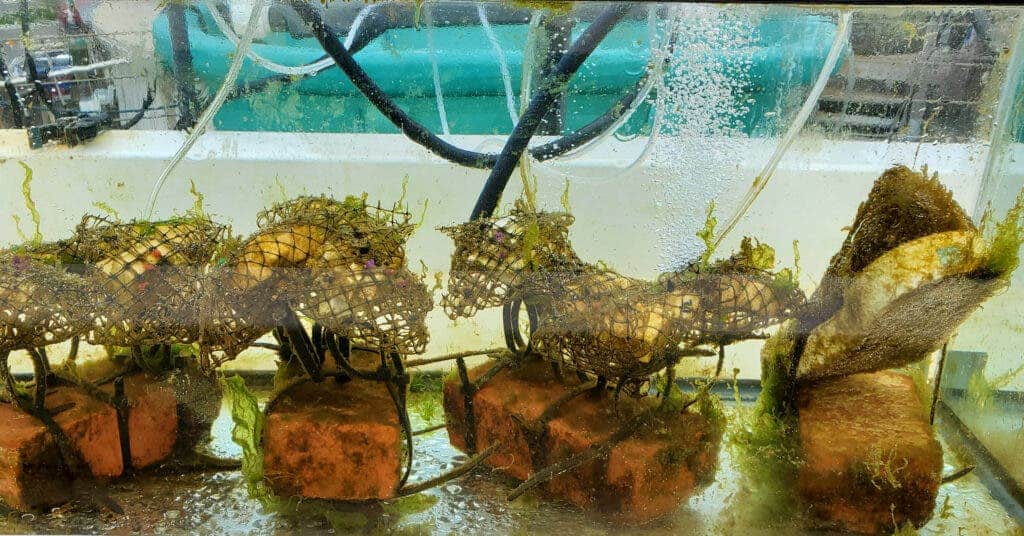Plastic pollution, including the wide-scale inundation of ecosystems and living organisms with microplastics, is a huge — and growing — concern. Researchers at the University of California San Diego plan to address it with a new biodegradable material.

The Earth is littered with plastic. From grocery bags strangling marine animals to the microplastics permeating our food and water, they represent a huge environmental and health concern. Sadly, given our strong reliance on such materials, it is doubtful that plastic is going away from the environment any time soon.
Because we can’t seem to wean ourselves off of this material, researchers are hoping that a practical substitute can allow us to keep meeting our needs while also protecting the world around us. One solution proposed by a team of scientists at the University of California San Diego is a form of polyurethane plastic that can degrade naturally in seawater.
Dissolving the issue
“Improper disposal of plastic in the ocean breaks down into microplastics and has become an enormous environmental problem,” said Stephen Mayfield, a professor in the School of Biological Sciences and director of the California Center for Algae Biotechnology and corresponding author of the paper.
“We’ve shown that it’s absolutely possible to make high performance plastic products that also can degrade in the ocean. Plastics should not be going into the ocean in the first place, but if they do, this material becomes food for microorganisms and not plastic trash and microplastics that harm aquatic life.”
Millions of tons of plastic waste end up in the ocean every year, causing massive disruption to marine ecosystems. They also pile up into ocean gyres forming veritable plastic islands. The Great Pacific Garbage Patch is an excellent example of such an island, covering an area of more than 1.6 million square kilometers. Because the plastic materials we use today are not biodegradable, these patches of garbage can endure for centuries, slowly breaking apart into harmful, tiny pieces — microplastics.
The team previously showed that a polyurethane foam they developed can biodegrade in land-based composts, showcasing its potential for reducing plastic pollution on dry land. Now, they fill out those findings by showing that it can also degrade naturally in seawater.
For the study, the team carried out a series of tests on the polyurethane materials they developed earlier; these materials are currently in use as foams in the first commercially-available biodegradable shoes, the team explains. The experiments were carried out at Scripps’ Ellen Browning Scripps Memorial Pier and Experimental Aquarium, which gave the team the opportunity to test materials in a natural nearshore ecosystem. As this is the exact environment where plastic waste enters the ocean, seeing how the material behaves here can teach us a lot about how it will behave in real use.
Foam samples were exposed to nearshore marine ecosystems and tracked for molecular and physical changes using infrared spectroscopy and scanning electron microscopy. This revealed that the samples started to degrade in as little as four weeks after initial exposure.
They report that once introduced into the wild, a host of marine organisms colonizes the polyurethane foam and begins breaking it down. In the end, this degrades the material into its base chemicals, which are then used as nutrients by these microorganism colonies. The team then cultured the microorganisms living inside these samples to identify which species were able to degrade the material. They report finding a mix of bacteria and fungi, which are thankfully widespread throughout natural marine environments, suggesting that the foams will behave similarly across the world.
“No single discipline can address these universal environmental problems but we’ve developed an integrated solution that works on land—and now we know [it] also biodegrades in the ocean,” says Mayfield. “I was surprised to see just how many organisms colonize these foams in the ocean. It becomes something like a microbial reef.”
Shoes make up a large percentage of the plastic waste that ends up in oceans and landfills, the team explains — especially flip-flops, which are the most popular shoe in the world. That’s why their material was first used to create shoes. The current findings show that such flip-flops can break down in water as well as in the landfill, bringing us one step closer to an Earth clean of plastic waste.
The paper “Biodegradation of renewable polyurethane foams in marine environments occurs through depolymerization by marine microorganisms” has been published in the journal Science of The Total Environment.









